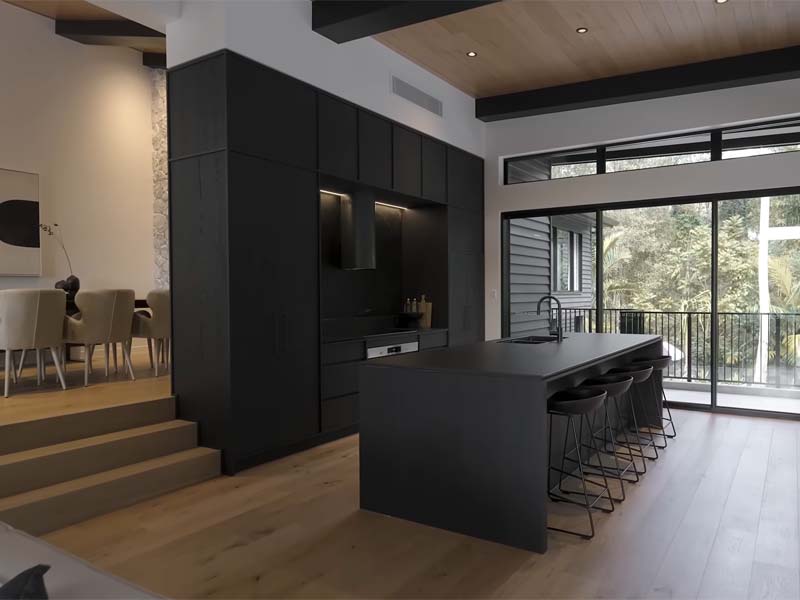Wood furniture and flooring are common elements in many homes, but some homeowners wonder if they need to match. The short answer is no, wood furniture doesn’t have to match the floor. In fact, mixing wood tones can create a dynamic and interesting look in your home. In this article, we’ll explore why wood furniture doesn’t have to match the floor and offer tips for mixing wood tones successfully.
Why Wood Furniture Doesn’t Have to Match the Floor
Mix-and-Match Styles are Popular
One reason wood furniture doesn’t have to match the floor is that mix-and-match styles are popular in interior design. Combining different wood tones can create a unique and personalized look that reflects your style and taste. Mixing wood tones can also make a room feel less formal and more inviting.
Matching Everything Can Create a Monochromatic Look
If you match your wood furniture and flooring, you may end up with a monochromatic look that lacks depth and interest. Using different wood tones can add dimension and texture to a space. A mix of light and dark woods can also create a beautiful contrast.
Contrasting Wood Tones Can Add Depth and Interest to a Space
Mixing different wood tones can add depth and interest to a space. For example, if you have a light-colored floor, you can add a dark wood coffee table or bookcase to create contrast. The key is to balance the different wood tones so that they work together harmoniously.
By the way, a lot of modern hydroponic devices for growing vegetables in the houseы can fit perfectly into the interior of your home. Some of them even have details made of wood and look very natural.
Examples of Successful Mix-and-Match Wood Furniture and Flooring Combinations
There are many examples of successful mix-and-match wood furniture and flooring combinations. For example, a dark wood dining table can look beautiful on a light wood floor. Similarly, a light wood bed frame can look great in a room with a dark wood floor. The key is to find a balance between the different wood tones and to make sure they complement each other.
Factors to Consider When Mixing Wood Furniture and Flooring
Undertones and Hues
When mixing wood furniture and flooring, it’s important to consider the undertones and hues of each wood tone. Some woods have warm undertones, while others have cool undertones. It’s important to choose wood tones that have similar undertones so that they work together harmoniously.
Species and Grain Patterns
Different wood species and grain patterns can also affect how well different wood tones work together. For example, some woods have a strong grain pattern, while others have a more subtle pattern. It’s important to choose wood tones that have a similar grain pattern so that they complement each other.
Proportion and Scale
Proportion and scale are also important factors to consider when mixing wood furniture and flooring. It’s important to choose furniture that is proportional to the room and that doesn’t overwhelm the space. Similarly, it’s important to choose wood tones that are proportional to each other.
Overall Style and Aesthetic
Finally, it’s important to consider the overall style and aesthetic of your home when mixing wood furniture and flooring. For example, if you have a modern home, you may want to choose wood tones that have a clean and simple look. If you have a traditional home, you may want to choose wood tones that have a more ornate look.
Tips for Mixing Wood Furniture and Flooring
Use a Neutral Color Palette to Tie Everything Together
One tip for mixing wood furniture and flooring is to use a neutral color palette to tie everything together. Neutral colors like white, beige, and gray can help to create a cohesive look in your home.
Choose a Dominant Wood Tone and Use Complementary Colors for Accents
Another tip is to choose a dominant wood tone and use complementary colors for accents. For example, if you have a dark wood floor, you may want to choose light wood furniture and add accents in complementary colors like blue or green.
Experiment with Different Wood Finishes and Textures
Mixing different wood finishes and textures can also add interest to a space. For example, you may want to mix a smooth, glossy wood finish with a rough, textured finish. You can also experiment with different types of wood, such as reclaimed or distressed wood, to add character to a room.
Use Area Rugs to Define Separate Spaces and Add Contrast
Finally, you can use area rugs to define separate spaces and add contrast. A rug can help to anchor the furniture and create a cohesive look in a room. You can choose a rug that has a pattern or color that complements the wood tones in the room.
Conclusion
In conclusion, wood furniture doesn’t have to match the floor. Mixing different wood tones can create a dynamic and interesting look in your home. When mixing wood furniture and flooring, it’s important to consider factors like undertones, species and grain patterns, proportion and scale, and overall style and aesthetic.
By following these tips, you can mix wood furniture and flooring successfully and create a personalized and unique look in your home. So go ahead and experiment with different wood tones and have fun with decorating!

